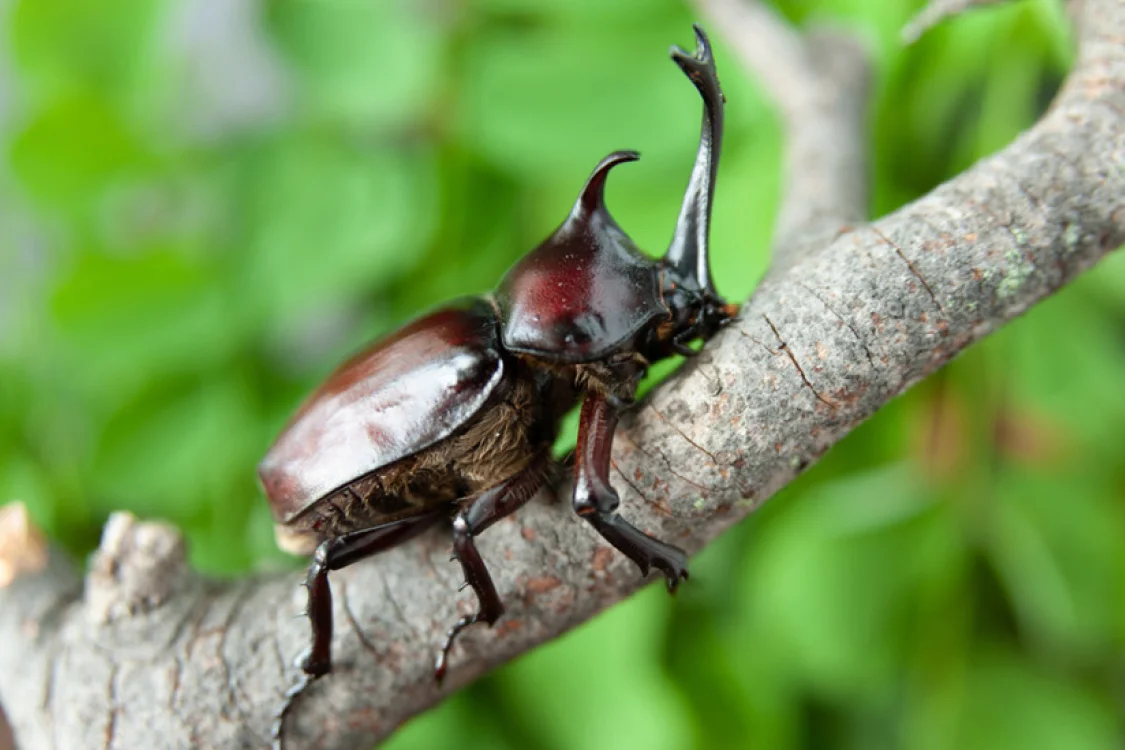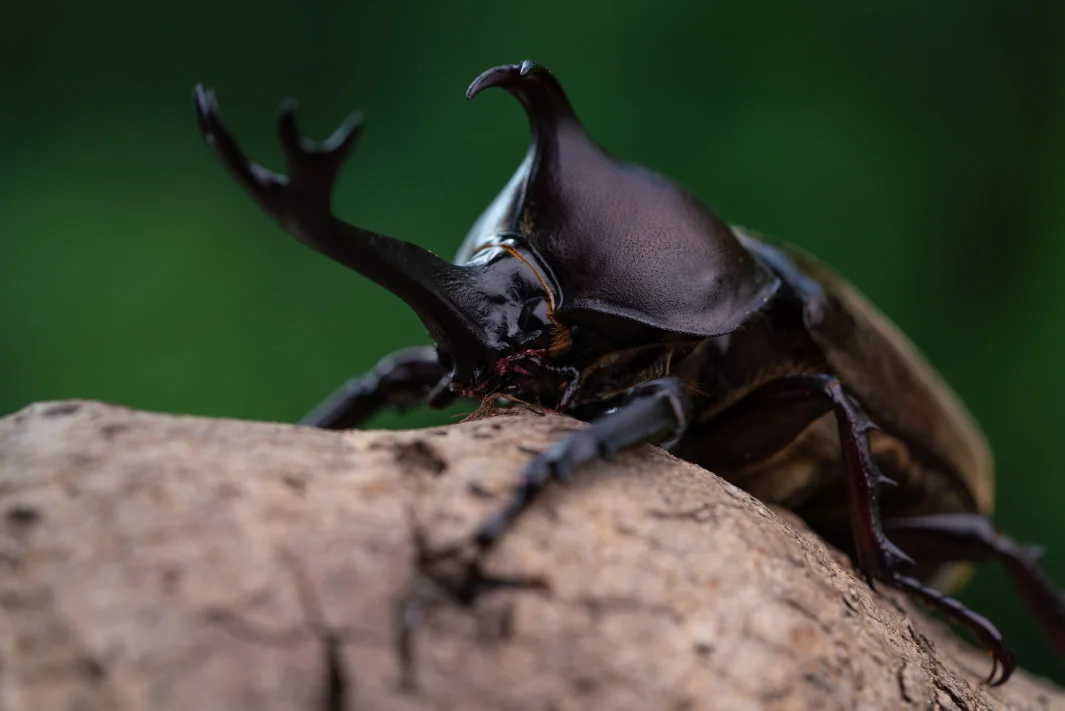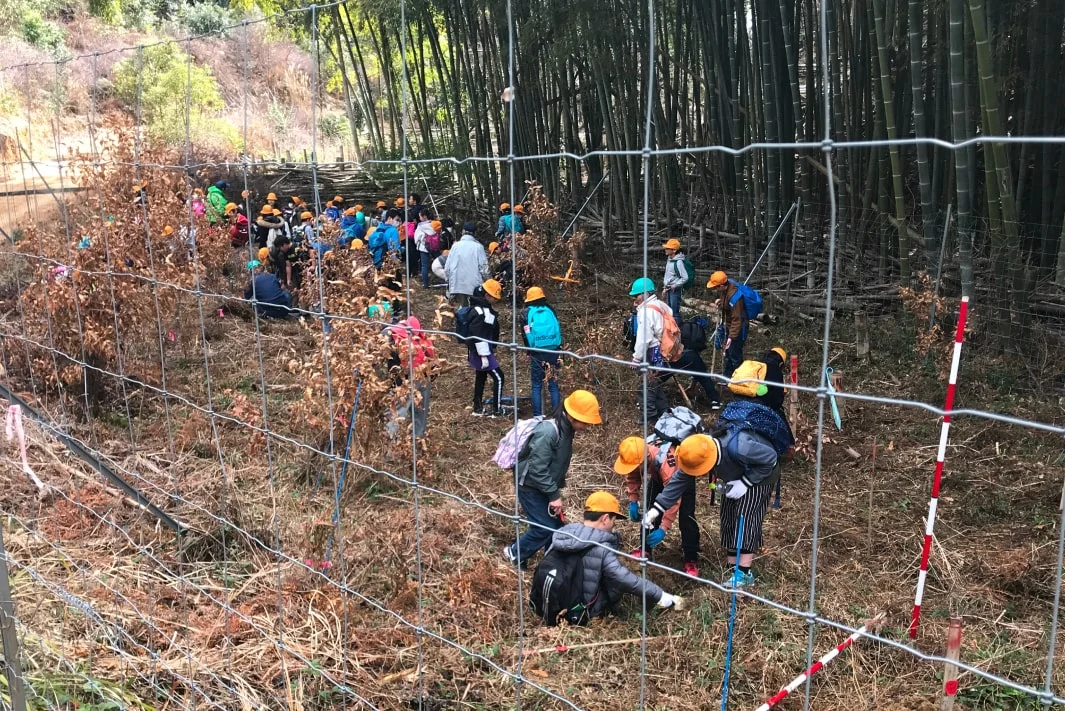Rhinoceros Beetles

This page contains photos of animals.
The rhinoceros beetle, known as the “king of insects,” is very popular among children in Japan. Its survival is closely connected to that of the forest, relying on mushrooms, withered trees, and other woodland features.
The Nocturnal Celebrities of
the “Sap Taverns”
In rural Japanese satoyama landscapes, oak species such as sawtooth and konara oaks were once cultivated for charcoal and firewood, and many such trees still thrive there today. One feature of these trees is that they often exude sap from the wounds on their trunk. This sweet sap attracts a variety of insects, creating an ecosystem hotspot that has been nicknamed in Japan as the “sap tavern.”
Just as some cafes in human cities turn into bars at night, the types of customers at these sap taverns also change once the sun goes down. During the day, butterflies, flower beetles, and hornets gather to feed on sap. Come nightfall, the butterflies are replaced by moths.
They are joined by two popular nighttime characters, namely the rhinoceros and stag beetles. These sap taverns don’t just attract insects; they also lure spiders, birds, and lizards that prey on the insects gathering there. As lively feeding hubs, the sap flows play a crucial role in satoyama ecosystems.

Rhinoceros Beetle Larvae Feed on Decayed Wood Decomposed by Fungi
While rhinoceros beetle larvae depend on withered branches and trees, they can’t eat the wood itself. Instead, they eat the nutrients in decayed wood that fungi, such as mushrooms, have decomposed.
A withered tree is mostly carbon and lacks essential nutrients like nitrogen and minerals. Fungi play a crucial role in transforming this wood. As they decompose, the fungi release carbon through respiration, form symbiotic relationships with microorganisms that fix atmospheric nitrogen, and absorb nitrogen and minerals through their underground mycelium. This process turns the wood into an ideal food source for rhinoceros beetle larvae. This is why mushroom growers in Japan often sell their used mushroom growing medium as suitable material raising rhinoceros beetles at home as pets.
Natural Water Sanctuary Initiatives
As part of our Natural Water Sanctuary activities, a Rhinoceros Beetle Forest Project has been undertaken with local children.
Rhinoceros Beetle Forest Project
In one section of our Natural Water Sanctuary Tennozan, an overgrown bamboo grove has been cleared. With the help of local elementary school students, a traditional oak forest (once widely used in Japan for producing firewood and charcoal) is being restored on this site. The goal of the project is to help restore the biodiversity typical of rural satoyama landscapes in Japan.
However, the idea of creating a forest that was once used for producing firewood and charcoal isn’t very appealing to children. So, the leaders decided to name the project site, “The Future Rhinoceros Beetle Forest.” They also built a large wooden enclosure and filled it with bamboo chips. As this material is decomposed by fungi, it becomes an ideal egg-laying site for rhinoceros beetles.

Natural Water Sanctuaries are Home to Many Other Living Things
Learn about some of the birds, mammals, insects, and living things that enrich the soil thriving in our Sanctuaries.
Learn about the living things in the Natural Water Sanctuaries
 Home
Home Initiative Policy and Structure
Initiative Policy and Structure Living Things in the Natural Water Sanctuaries
Living Things in the Natural Water Sanctuaries Dedication to Water
Dedication to Water Natural Water Sanctuaries
Natural Water Sanctuaries  Natural Water
Natural Water  Initiative History
Initiative History